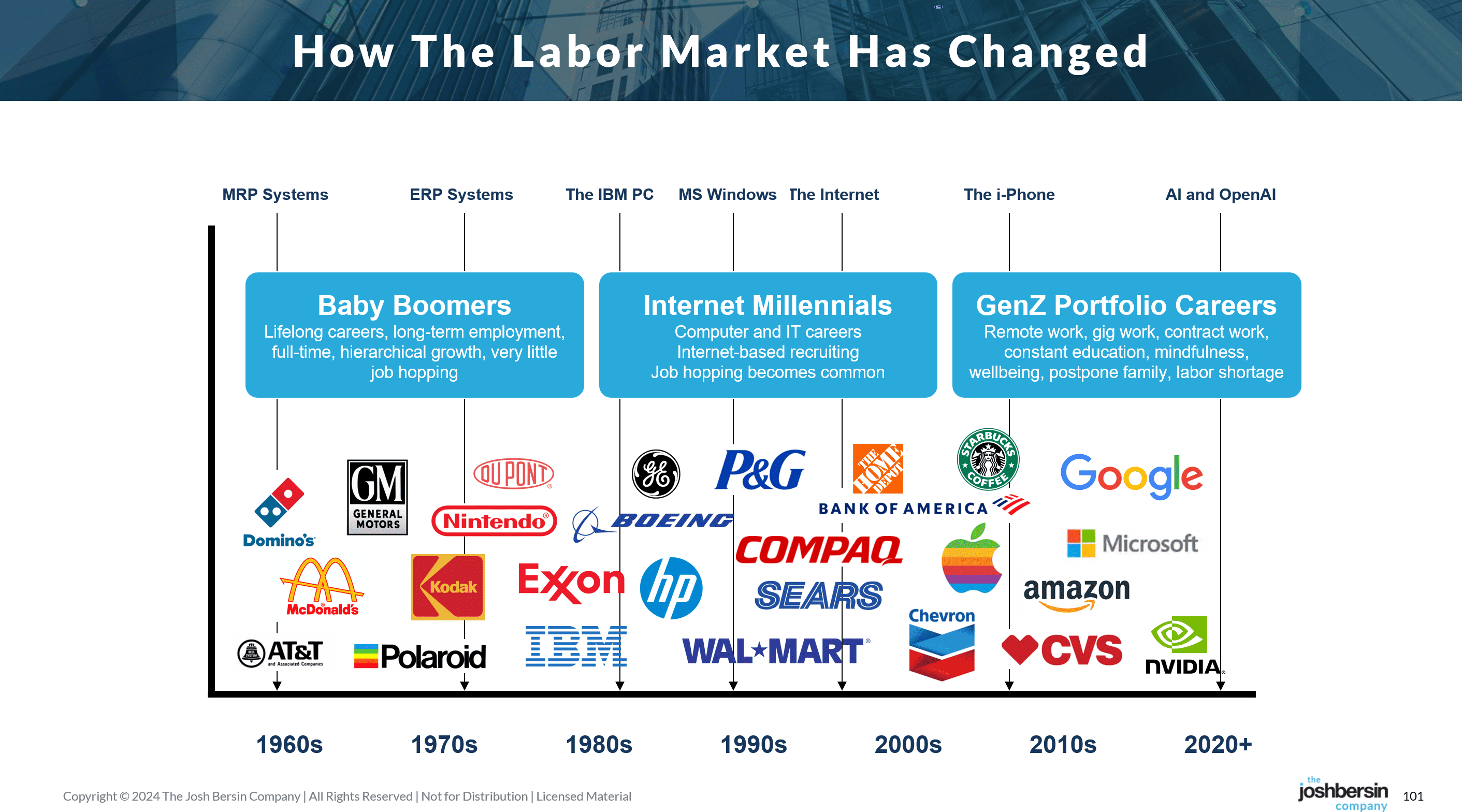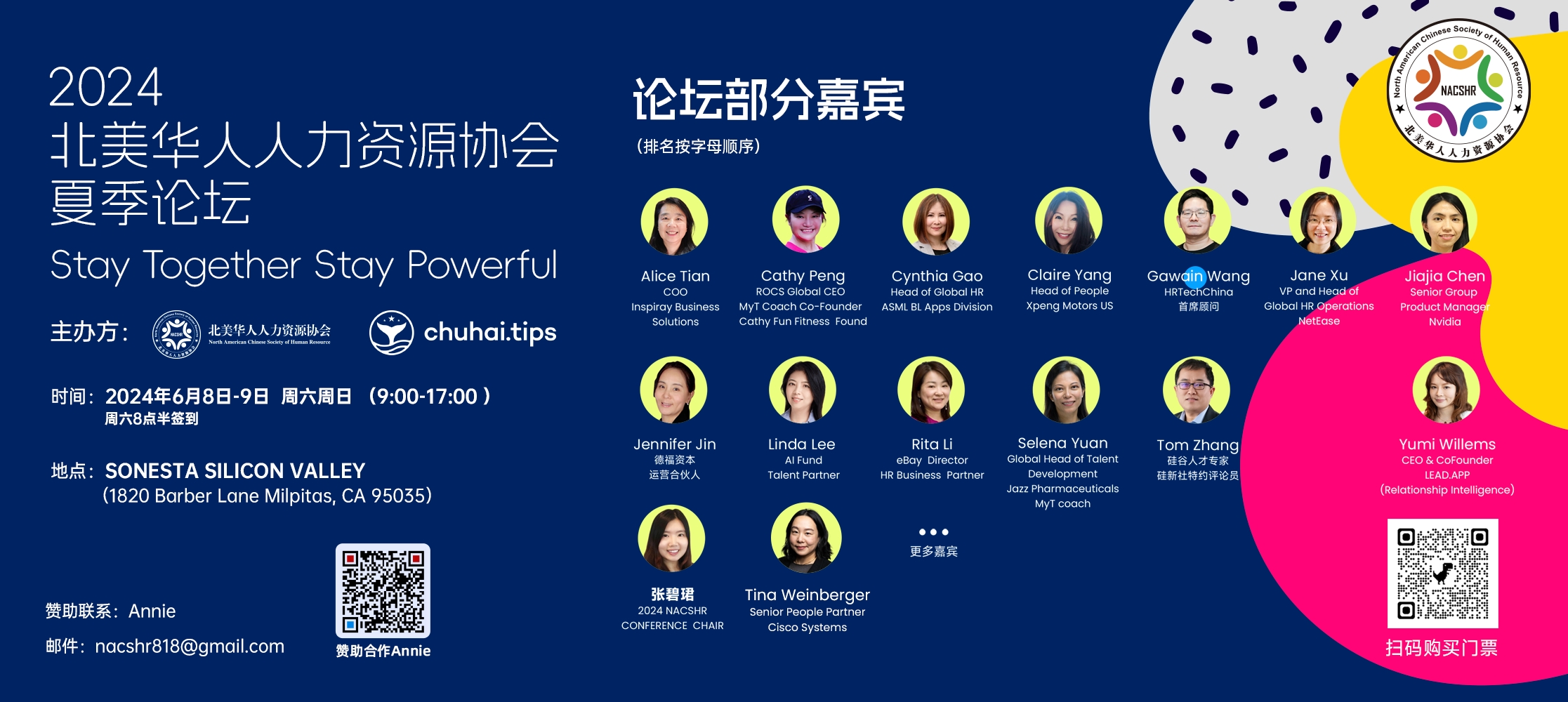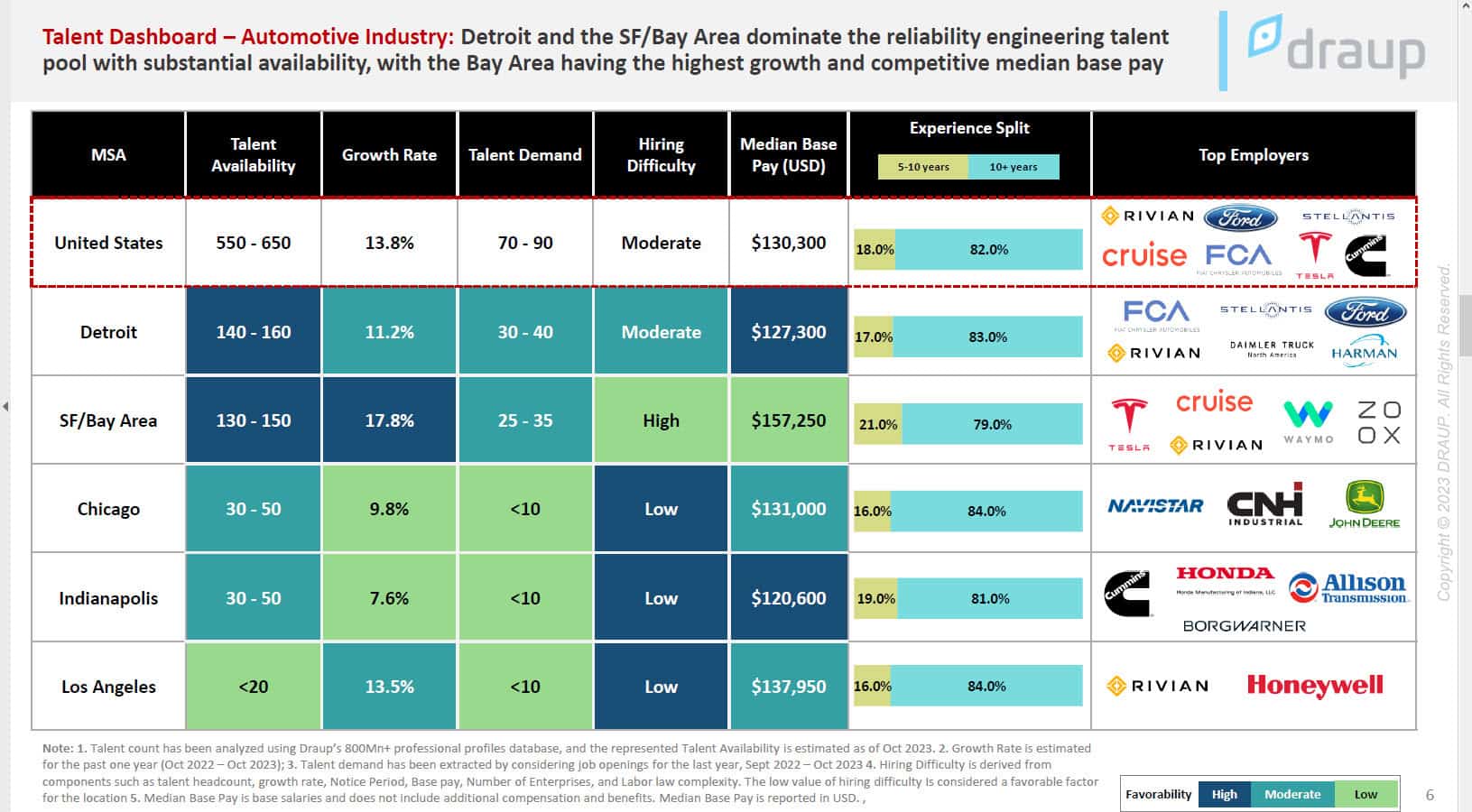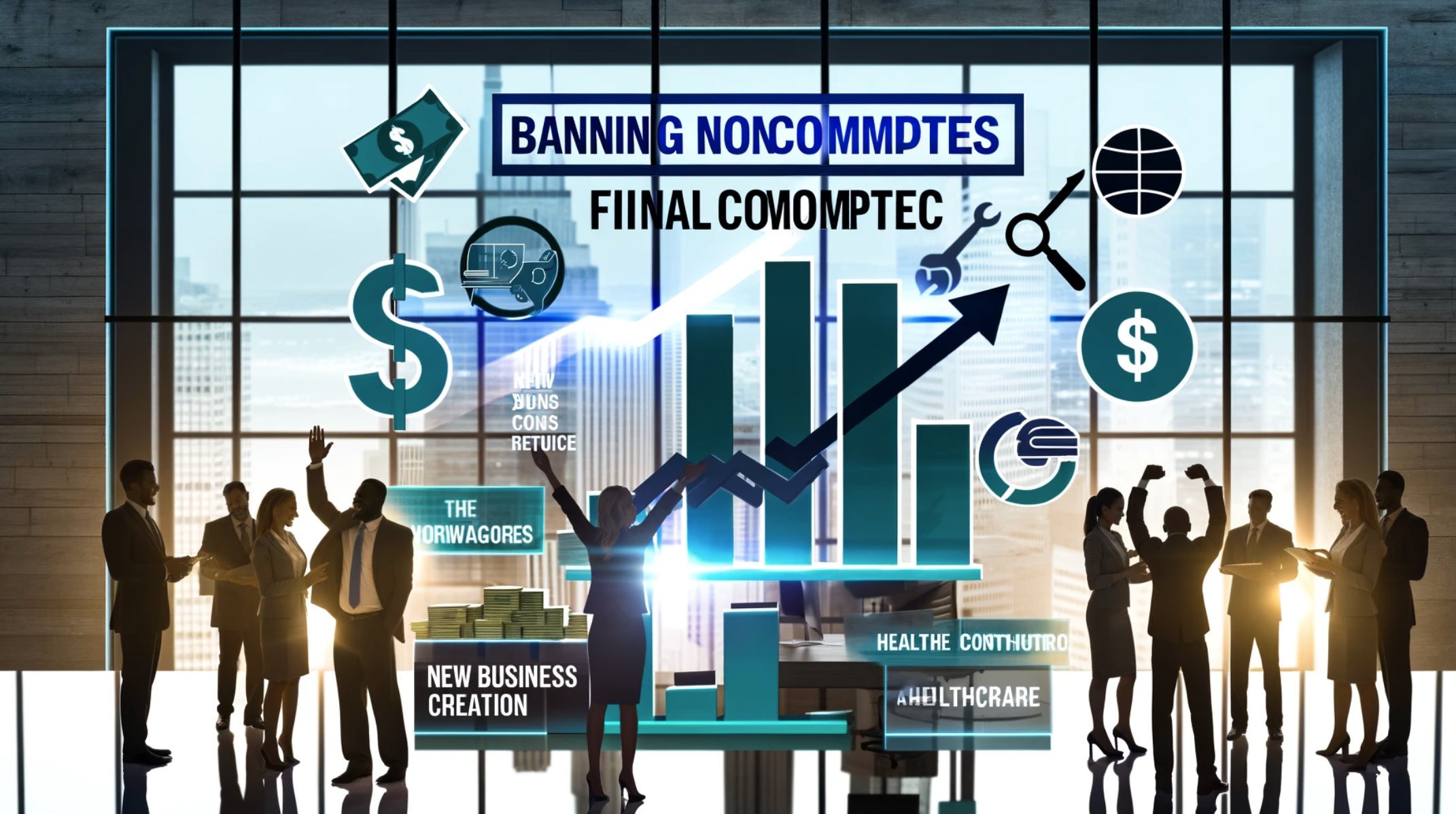Josh Bersin 最新撰文谈到,随着以婴儿潮一代为主的劳动力队伍的衰落和具有独特期望和职业模式的新一代的崛起,劳动力市场发生了巨大的变化。这一新劳动力的特点是偏好组合职业和副业,他们要求尊重、灵活性和精心设计工作的机会。企业在适应这些变化时面临着挑战,职位普遍空缺,人员流动增加。文章强调,企业需要采用一种动态的组织模式,优先考虑授权、内部流动性和员工积极性,以便在这个新的劳动力市场中茁壮成长。这种适应的关键在于了解劳动力现在寻求的是成长、灵活性以及他们的价值观与工作之间有意义的结合。
英文原文如下,推荐了解
The labor market has changed before our eyes. Employers and HR teams better watch out.
Over the last five decades baby boomers defined the workforce. Today things could not be more different, and this change impacts all of us.
I was born in the 1950s, growing up in a world where the middle class experienced steadily increasing standards of living. My father was a scientist, my mother sold art, and my brother and I had a nice middle-class life.
This included a three stage career: education | work | retirement. I went to college, studied hard, and got a good job as an engineer. My career went on a predictable path. I worked for Exxon and then IBM – each company giving me training, development, and potential for long-term career. I met many great people, learned about work, got married and had a family.
My cohort, the baby boomers, was huge. Companies built entire talent systems for us – onboarding, training, predictable career growth, developmental assignments, leadership development, and retirement programs. We strapped ourselves in and enjoyed the journey.
Fast forward to now:
things are very different.

Today’s working population bulge (
median age 33, born in the early 1990s,) entered the workforce in a disrupted world. They joined companies during a boom, experienced the pandemic in their 20’s, and live in a world where everything is on the internet. While my generation revered our employers, these workers see every corporate mistake in real-time. They expect their bosses to earn their respect, otherwise they’ll “
quietly quit” or start moonlighting on the side.
While my generation expected to work for only a few employers during a career, today people build what
Lynda Gratton calls “a portfolio career.” More than 2/3 of workers have side-hustles and their resume is filled with projects, businesses, activities, and professional interests. If you look at the LinkedIn profiles of most high performers they look like personal journeys, far different from the linear career paths we had in the past.
While most of these changes came slowly, the end result is profound: the expectations, needs, and demands of workers are different. And businesses have struggled to keep up. Companies have vast amounts of unfilled positions, we suffer high turnover in almost every role, and labor unions are growing in number.

What do companies do? We have to accept and understand that the labor market
has totally changed.
We live in a world where employees will live into their 100s. Young workers are postponing getting married and having children and they see their career as a long series of experiences. The norms of a long-term linear career have ended: people try new things, change industries, and live in what I call
a “pixelated” job market.
And rather than blindly trust employers, people bring high expectations to work. Young workers don’t expect to “become the job,” they want the job to “become them.” (Often called “
job crafting.”) And given the shortage of workers in every role, this trend is just getting bigger.
While economists believe the job market will soften and employers will have more power over time, I think those days are over. Life just isn’t going back to the way it was. Despite the growth of AI, companies are more dependent on their workforce than ever. And with 70% of the jobs now service-related (healthcare, retail, hospitality),
employees really are our product.
I look at it this way. Companies and employers live in a pool of labor: it’s the needs and expectations of people who decide what we can and should do. People are upset about inflation. They’re worried about climate change. They want CEOs to behave ethically. And they want flexible work that lets them live a joyful life.
And every year the workforce becomes more educated and connected. (The percentage of
US workers with degrees has gone up to 54%, up from 38% fifteen years ago.) People know about the company’s financial results or other issues far before an announcement even comes out.
While many of these trends are obvious, many companies aren’t ready. Last year I talked to the CHRO of Boeing and he told me the problems were highlighted by employees years ago. They simply were not listening, and now they’re a company in crisis. And that leads to the topic of “
employee activation.”
In the old days senior leaders made decisions, workers carried out the orders. Ideas and strategies were “top-down.”
Today much of the intelligence we need to grow our companies is sitting with front-line workers. We need to “activate employees” and listen to them directly. The worker in the store, plant, or front office who feels frustrated by some system or process is the person who should advise us what to do. The old idea of “management by walking around” must come back. (Our
Org Design Superclass explains this in detail.)
I don’t mean chaos,
holacracy, or lack of controls. Successful companies have a clear mission, a series of strategic initiatives, and budgets to hold people accountable. But they empower
everyone to be a leader, unleashing power from the bottom up. (Come to
Irresistible and learn about how Marriott and Delta airlines exemplify this model.)
The key is building what we call a “
Dynamic Organization” – one which is flat, team-centric, connected, and accountable. Our research shows that only 7% of companies operate this way: most are still very hierarchical and slow to adapt. But change is coming, as companies like Delta, Marriott, Telstra, Unilever, Novartis, Seagate, and Bayer have found out.
(This week the
CEO of Bayer announced a radical transformation to a team-centric management model, dramatically reducing the number of “bosses.”)
A dynamic organization does two things well. First, it adapts to change, sees new markets, and mobilizes quickly for change. But even more importantly, it empowers people, encourages internal mobility, and focuses on meritocracy, skills, and collaboration to thrive. (Read about
Talent Density to learn more.)
While these ideas are not new, urgency is critical. Employees
demand growth, flexibility, and agency – and we can’t deliver it unless our reward and development systems change. Today more than 70% of US jobs are in the service sector: health care, retail, entertainment, and transportation. If we don’t empower people in these roles our products and services will suffer.
Let me conclude with this: we just woke up in a totally new labor market. If you don’t focus on empowerment, growth, and
employee activation, talent will just go elsewhere.







 扫一扫
添加客服
扫一扫
添加客服




